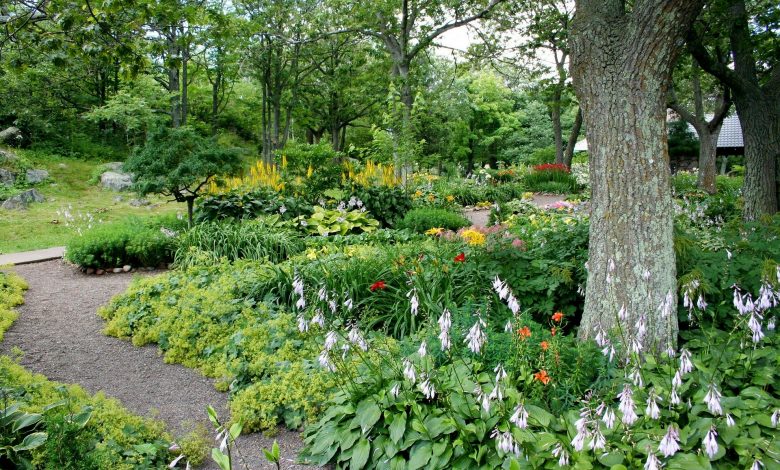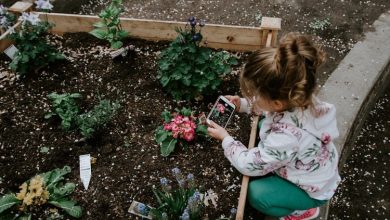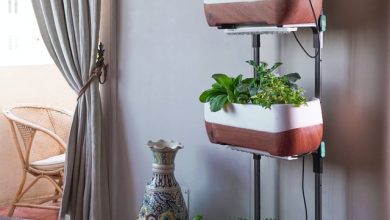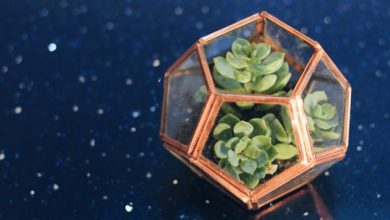How to Create the Perfect Landscape Design

Our backyards are an extension of our homes, and often an extension of our preferences and personal tastes. Sometimes the décor of the inside of homes tends to spill out into the outdoor landscape, and it creates a welcoming space where people can relax and enjoy the outdoors.
The landscaping design of your garden can be the deciding factor between whether your space is welcoming or chaotic. Luckily, even a few small changes to the space can improve its character, whether you add a nice path or establish a sitting space.
If you want to improve your garden space or give it a complete refresh, you might be wondering “How do I create the perfect landscape for this space?” The answers are plenty, but we have some tips that can give you a basic idea of where to begin and how to tackle your unique space.
Create a List of Wants
Even before you begin to make a landscaping plan for your garden, you’ll want to get your ideas organized. There are so many places to find inspiration these days, and it can be overwhelming to try and settle in on an exact plan.
Start a list of all of the most important things you want in your garden space. Do you have children who need a safe space to play? Are you envisioning a patio where you can entertain guests? Are you hoping to cook dinner outside? What about a pathway?
There are no wrong answers when it comes to your list. Choose up to ten things that you definitely want to see in your landscaping design, and then stop looking for more ideas. For now, this will be enough to work with!
This list isn’t permanent, and it can change over time. You may find as you go that your garden space doesn’t allow for some of your plans, or that you can fit in more! When those moments come around, you can update your list.

Study Your Garden
Surprisingly, a lot of people don’t know their space as well as they think. If you haven’t spent a lot of time in your yard, you might not realize where the sun hits, how warm it gets, where it’s windy, etc.
If you’re going to be able to start visualizing where things will go in your space, you’ll want to know some of these things. You wouldn’t want to put together a patio that gets full sun without offering any sort of shade!
Similarly, if you like to entertain, you might want to have pathways and a patio located closer to the home’s access points. Realistically, it’s all in the eye of the beholder. Consider these factors when you’re coming up with the things you really want for your landscape.
Sit in the Space
Whatever you have in your garden space right now, sit down and actually experience it. Even if you only have a few camping chairs or a bench, head outside and spend some time in the actual environment.
By actually taking some time to relax in the space before it’s been updated can expose some factors you might not have realized before. Similarly, you might be inspired by your space just by the way it already behaves.
Sit in a few different spots, and even in the areas where you wouldn’t have considered sitting before. The world is your oyster when it comes to landscaping, so there are no limitations (in most cases).
Of course, if your landscape dreams include a pool, you’ll have to be a little more specific and realistic about where things can go.
Draw Something Up
If you think you’re ready to create a new landscape design in your garden, grab a piece of paper and start drawing. Here you can create some simple sketches of where you want things to go, how big you want them to be, and what colors.
You don’t have to be an artist to complete this step. Some of the best gardeners will have a sketch that’s mostly circles and lines before it comes to full fruition! If you want to be very meticulous, it may help to measure out your space and include general measurements of where you want things to go (including paths, plants, furniture, etc.)
This can be as detailed or a simple as you want, so long as you know what the plan is.

Decide on a Focal Point
Without a focal point for your landscape, it can be very hard to distinguish a design. You wouldn’t want guests to walk into your garden and feel overwhelmed by random garden beds and bushes everywhere!
Having a focal point allows you to build up your garden design around a specific spot, or a few spots. Once your garden landscape is finished, the setup should make people’s eyes float from one end of the landscape to the other.
It will be a seamless movement that allows visitors to take in the entire space without getting confused or overwhelmed.
Your focal points can include whatever you choose: a group of bushes, a pergola, a fire pit, etc. The options are endless.
Know Your Garden’s Characteristics
This is one of the most important things you’ll need to know if you want to successfully create a landscape design for your space. You can do all the planning in the world for your backyard, but you won’t get the results you want if you don’t know what kind of space you have.
What we mean by this is that you know what kind of soil you have, how much sunshine you get, and the kinds of things that grow well in your climate.
You can plant whatever bushes and flowers you want, but if they all require acidic soil and yours is alkaline, they might be gone before the season is out. No one wants to spend their time designing and building clever paths and beautiful plant beds only to fill them with dead plants!
That being said, if your landscape is new to you, figure out what kind of soil you’re working with, and how much sun the area gets. These kinds of things will tell you what plants will do best in your garden, and which ones you should stay away from.
Take Your Time
Rome wasn’t built in a day, and your landscape won’t be either! That being said, there’s nothing wrong with taking your project slowly and enjoying the process of it all.
Lots of home renovation shows like to highlight how they can update a garden in a day or two, but that’s when they’re working with a team of 50 people! This kind of timeline isn’t realistic for a real-life homeowner who has lots of other things on their plate.
You might want to create a timeline that will allow you to decide when you want certain projects to be completed by. This way you can focus on specific projects on evenings and weekends and slowly watch your new landscape take form.
You might want your backyard to become the perfect oasis in a weekend, but there’s a good chance you’ll change your mind about things a few times. Let one or two projects come into being, and make sure you still like how everything looks before moving forward.

Start Small
If you’re not sure how to create the perfect landscape design, one thing to remember is to start small. Begin with a few projects that are easier and more manageable than larger ones, and that way you’ll be right into the groove of things when it comes time for bigger projects.
Smaller projects might including building flower boxes, transporting plants, or simply cleaning up the entire space from old weeds, leaves, and debris. Once these smaller projects are done, you’ll likely have even more room for your bigger projects, and you might even get a better visual.
Starting small helps to get you into the flow of changing your landscape, and can encourage you to stay on the path until everything is complete.
Starting small might also be beneficial if you are trying to maintain a specific budget. Work on things that are affordable now, and save up for those larger ideas that will come later.
Find a Balance
One of the keys to making any landscaping space look its best is to find a balance between all things. This includes a balance in different heights, textures, pathways, and others.
You might have a few plants or shrubs that you favor, but that doesn’t mean you should fill your yard with them. Repetition might seem an easier option for creating a landscape, but it can end up making the space dull.
Don’t be afraid to be a little adventurous when it comes to the things you incorporate in your new garden landscape. Variations in plant sizes, colors, and textures will add some intrigue to your garden, as will some curvy lines and unique spaces.
Consider working with some of your favorite elements, and then adding in one or two new elements. This way your yard isn’t bombarded by random designs but instead incorporates your personal style preference with a few conversation pieces.
Go With the Flow
As mentioned earlier, the ideas you have for your landscaping plans won’t always end up the way they started. Some of the things you wanted may not come to fruition, or perhaps you had a new idea that sparked during the changes.
The point is that you must be open to changes that will certainly take place as you create your new space. It’s hard to know exactly what your garden is capable of until you start the work, so prepare for some surprises, both good and bad.
So long as you’re taking your landscape design slow and steady, you’ll be able to re-work your plan as needed. In the end, you’ll have a space that is beautiful and maintainable too!
Don’t Rush It
If your garden space hasn’t been shown love in quite some time, you’re going to have to be patient as you create the perfect landscape design.
Just like flowers, beautiful things are worth waiting for! If it’s already well into the summer or fall, you may need to put some landscaping plans on hold. In the meantime, you can focus on improving poor grass growth, laying fast ground covers, or planting some annuals. This way, you’ll have a good idea of how much space you have to work with, and what kind of potential your garden has.
Key Tips to Create a Garden Landscape

Keep Humans in Mind
While you’re designing your garden space, keep in mind who is going to be enjoying it and where. Will there be paths for people to enjoy and places to sit? If this is the case, it’s important to remember to create spaces that are large enough.
You don’t want people to feel claustrophobic traveling through your trails, or too squished in your new sitting area. Make paths wide enough to walk through so that people can travel freely,and plants are not trampled on.
Be Mindful of Your Steps
If you will be incorporating steps into your new landscape, ensure that they are well-built and easy enough to use. Stairs that are too deep can be dangerous, and having too many might be tiring!
Consider adding in landings if you have lots of steps; similarly, landings are necessary if the steps change direction. Additionally, ensure that the rise of your steps is no more than six inches high to avoid trips and falls.
Build Pathways
Pathways are a great way to entice people to venture deeper into your garden. However, depending on the material you choose to build your paths, you’ll want to be careful.
If you’re building a gravel walkway, go with unsifted gravel. This option is nicely compact and won’t move around when people walk on it.
Alternatively, going with a stone pathway or something similar will require some extra planning. You want to find stepping stones that will stay in place, and which will remain level. Additionally, you’ll want to go with a texture that doesn’t become too slippery in wet weather.
When you’ve chosen the right material for your path, keep in mind that it should be slightly sloped. This will help you to avoid water pooling, which can cause all kinds of issues.
Add Room to Grow
One of the benefits of being patient with your garden landscaping is that you’ll be able to see how much room your plants are taking up and whether you need more.
Rushing to fill a space with still-growing plants could mean that they become far too big for the space, and for the other plants around them. Every plant should have some breathing room around it so it can get adequate watering and sunshine.
When you’re choosing your plants, ask an assistant how big they generally become in adulthood. This way you can gauge how many plants you’ll need and where they’ll need to go in your garden.
Consider All the Seasons
When you’re choosing plants for your garden landscape, be sure to consider how the plant behaves in other seasons. Will it wilt and die, or is it a plant that will survive through the winter?
If you want your space to be just as beautiful in the fall and winter as it is in the summer, consider incorporating plants that flourish in the fall, and others that survive through the winter. Choose locations where these plants will be seen in the off-season, so there is still much to appreciate when your summer plants disappear.
Look to the Future
If you know that some of your future landscape plans include having electricity or plumbing, take that into consideration in your current plans. This kind of project can require a lot of digging and upheaval, and you wouldn’t want your landscape to be ripped up as soon as it was completed!
If you know you’ll be doing some potential digging, consider keeping these spaces clear for now. This might mean leaving them empty in a garden space or just laying down some sod for now.

Your ideal garden landscape isn’t going to be built in a day. The good news is, if you’ve been thinking about updating your backyard oasis for some time, you can start right away! Creating the space of your dreams will surely come to fruition with the right amount of planning and research.
Remember to know about the space you’re working with and what kind of plants and projects are doable in that area. If something you wanted isn’t going to work, there’s definitely another option that will be just as beautiful.
Keep your eye on the finish line, and by the next warm season, you’ll have a unique, welcoming landscape that people will be begging to visit!



